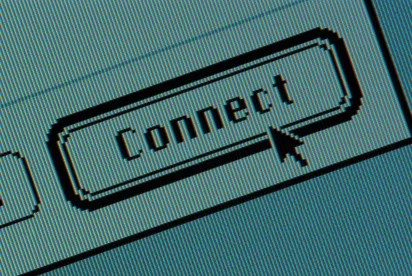The phenomenal growth of the Internet of Things (IoT), widely hailed in 2015, has been greater than originally forecast. Gartner, Inc. estimates a 30 percent increase in IoT devices connected to the Internet in 2016, which equates to 6.4 billion devices, and forecasts that more than 20 billion devices will be connected to the Internet before 2020. On average, 5.5 million new devices are connected to the Internet each day. As the IoT becomes part of the everyday lexicon, there remains a need to examine the myriad risks associated with this explosive growth across multiple industry sectors to address the inevitable weaknesses with software and security that will be part of the foreseeable future of the IoT. In turn, these vulnerabilities can and will lead to property damage, bodily injuries and deaths. Internet attacks leading to physical damage date back to the 2010 cyberattack on the Iranian nuclear energy plant in Natanz that destroyed or disabled centrifuges. Later, in 2014, a German steel foundry was the target of a cyberattack leading to the destruction of a blast furnace.
The vulnerabilities continue to emerge. In January 2016, Forbes and The New York Post reported on a December 23 cyberattack that brought down the energy grid for a large part of the western Ukraine resulting in power losses for a number of cities for a period of several hours. According to published reports, hundreds of thousands of homes and businesses were without power. While not verified, it is suspected that the Ukrainian disruption was, in part, a cyberattack because malware called BlackEnergy was found on computer systems of the affected power companies. The same malware was reportedly found in two other Ukrainian utility companies that were not attacked. On March 1, 2016, The New York Times reported that the Department of Homeland Security (DOHS) issued an alert noting that the BlackEnergy malware was directed to attack the vulnerable industrial control systems.
Perhaps of greater concern, the malware was found to have the capability to permanently delete files and disable the hard drives of the industrial control computer systems. This is precisely where the information technology (IT) and operations technology (OT) for industrial systems intersect and it is the area security experts generally deem to be the most vulnerable to a cyberattack. This is because OT operates 24/7 and does not always synchronize with IT, which frequently provides the perimeter defense against cyberattacks.
Lloyd’s of London just months before published a study called “Business Blackout” that forecast the possibility of such an event and addressed the potential economic disruption, property damage, bodily injuries and deaths that would occur from just such a cyberattack, only this time on a much larger scale targeting the U.S. power grid.
The report studied the potential devastation and economic disruption that would take place if a sophisticated group of hackers (e.g., nation state sponsored or terrorist organization) were able to place malware into the control systems of 50 generators in power plants along the eastern sector of the United States and cause them to self-destruct, thereby sending 15 states as well as Washington D.C. into a blackout. The damage forecasts range from $243 billion to $1 trillion. Page 25 of the report provides a very good discussion on the vulnerabilities insurers presently face, in part because they may have a significant stake in covering the aftermath of such an event but have not realized that their current policy language in the absence of specifically crafted exclusions makes them vulnerable to first-party and third-party claims.
Unlike the U.S. grid, the attack on the Ukraine power grid may have been thwarted by the fact that the country relies on antiquated technology and is not fully connected to the Internet. This allowed the companies to restore power within a short period of time “by manually flipping old style circuit breakers.” This, however, cannot be done with the U.S. power grid; thus, a similar attack on the U.S. power grid could have much greater long-term disruptive consequences. However, the vulnerability to malicious hackers is not limited to the power grid. Most of the critical infrastructure throughout the United States from water treatment plants to traffic lights and air traffic control systems are potentially vulnerable to cyberattacks that could wreak havoc and destruction.
James R. Clapper, Director of National Intelligence, appeared before the U.S. Senate Select Committee on Intelligence in February 2016 as part of a report on the worldwide threat assessment by the U.S. intelligence community. The Internet of Things was identified as a threat “to data privacy, data integrity, or continuity of services.” [Emphasis added.] In particular, Clapper noted that foreign intelligence services in the future might use the IoT for identification, surveillance, monitoring, location tracking and targeting for recruitment, or to gain access to networks or user credentials.
On the medical device front, in January 2016, the Food and Drug Administration released a draft guide for post-market management of cybersecurity in medical devices. The guide, which carries no weight of law, was developed in part to address cybersecurity throughout the product lifecycle, including the design, development, production, distribution, deployment and maintenance of the device. The draft notes in particular that cybersecurity risks to medical devices are continually evolving and therefore it is not possible to completely mitigate risks through premarket controls alone.
As part of the premarket considerations, it was recommended that manufacturers should establish design inputs for cybersecurity and establish a cybersecurity vulnerability and management approach as part of the software validation and risk analysis required under 21 CFR 820.30(g). Among the items to be addressed are (1) identification of threats and vulnerabilities, (2) assessment of the impact of threats and vulnerabilities on device functionality and end users/patients, (3) assessment of the likelihood of a threat and of a vulnerability being exploited, (4) determination of risk levels and suitable mitigation strategies, and (5) assessment of residual risk and risk acceptance criteria.
The cyber vulnerabilities recognized include unauthorized access; modification, misuse or denial of use; and unauthorized use of information that is stored, accessed, or transferred from a medical device to an external recipient, and may impact patient safety.
In line with these concerns, a Southern California hospital was the target of a recent denial of service attack executed against the hospital’s computer system, which was held hostage for 10 days resulting in the hospital paying the hackers $17,000 in bitcoin to provide an encryption key. This attack, if taken further, could potentially have led to critical patient care services being compromised. Examples include patient medical records possibly being altered or devices such as infusion pumps, which deliver chemotherapy medication, becoming vulnerable to dosage manipulations. According to a security consultant, there were a number of such attacks last year against health care facilities, and many more go unreported.
In the consumer arena, in January 2016 it was reported that the Nest thermostat, which allows consumers to control the heating and cooling systems in their homes over the Internet from remote locations, suffered a software malfunction that resulted in the battery draining and shutting down the device, thereby ceding control over the heating and ventilation systems connected to it. The result was a series of complaints from consumers about cold homes, possible water pipe damage and concerns about infants being exposed to unreasonably cold temperatures. While a fix was put in place, there is already at least one law firm soliciting potential plaintiffs for personal injury or property damage lawsuits as well as potentially filing a class action.
Other recent IoT-based litigation includes a class action against ToyTalk, Inc.; Mattel, Inc.; and Samet Privacy, LLC d/b/a Kidsafe Seal over claims of Internet security vulnerabilities with the “Hello Barbie Doll.” A similar class action has been filed against VTech for vulnerabilities with digital toys that children use to browse the Internet and communicate with each other. The difference with the VTech case is that hackers actually obtained information on almost three million children and parents in November 2015.
As the IoT continues to expand, expect to see more reports of vulnerabilities, successful cyberattacks and, inevitably, physical damage and personal injury losses from defects with software and sensors as well as cyber security vulnerabilities. There is at this time simply no panacea that will address all the potential vulnerabilities with the IoT; nor can anyone accurately predict how the known and unknown vulnerabilities will manifest themselves and what the fix will cost.



 />i
/>i

